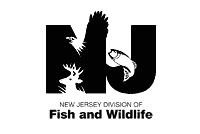Sometimes new users mistake NestStory for an “app” which is supposed to make their time in the field easier. NestStory is actually a much bigger data system with a higher purpose. It was created to help animals more effectively by encouraging staff and volunteer monitors to collect more data and to report it in ways which make it more useful and longer-lasting for the biologists and wildlife managers who depend on it.
If you have never thought about how valuable your field observations and contributions are, or have never considered how they are used by scientists to study and protect endangered animals, NestStory might seem complicated at first. But it is really pretty simple once you understand a few core principles.
It is worth the effort because in the end NestStory ensures the maximum benefit from your efforts and contributions. Your field observations are invaluable. NestStory was created to care for them and help them make the biggest impact.
Our field experiences as data
All of our real world field experiences can be broken down into tiny bits of data. Your average nest check might include the time you arrived, the number of chicks you saw, and the temperature that day. The more completely and more consistently we break down these activities and observations, the more ways they can viewed, queried, combined, studied, and learned from.
With our field activities translated into good data, wildlife managers can monitor large populations more easily and in realtime. And decades from now, future biologists will be able to effortlessly reassemble all of these bits of data and get a pretty accurate picture of what you observed during any nest check, and across the seasons, while combining them with other data to learn new things and help more birds. The data we contribute today has the potential to outlive us all and to continue to benefit the world long after we are gone. The time you spend in the field and the things you observe there really are that important. Honoring that is what NestStory is all about.
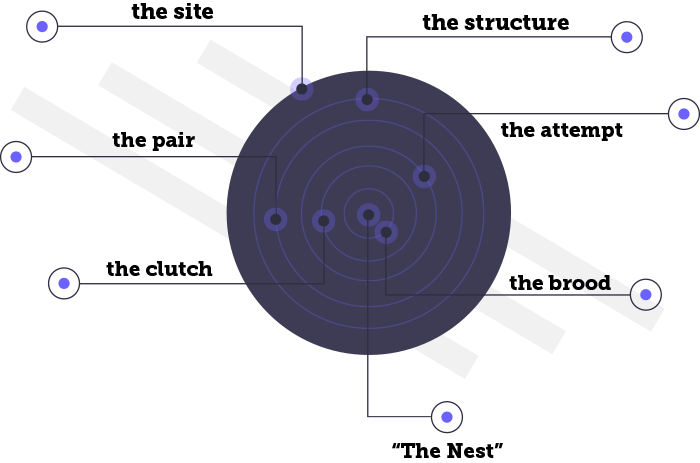
NestStory tracks all of the smaller pieces which make up a nest. Each has unique importance and a distinct fate.
What is a nest, actually?
We casually describe our main activity each season as “checking nests.” But the secret to good data is making each bit of it both as concise and as specific as possible. So what is a nest, actually? A collection of sticks? A pile of eggs? Two adults in courtship? It can be all of these things and none of these things. So NestStory gets more specific by breaking out the nesting site, the nesting structure, the pair, the clutch of eggs, the brood of chicks, and much more. As nest monitors, we are generally looking at all of these tiny details and then reporting our overall impression of what’s happening at “the nest”, supported by the key observations we think support that best.
NestStory turns that upside down and asks you record everything that you see, and also often what you don’t. A great example is a bald eagle nest high in a tree where we can’t see the eggs. It might seem odd at first that NestStory asks us to record “-” for the eggs every time we check the nest. But it makes more sense when you consider there are thousands of nests and at many of them the monitor can see the eggs. Your consistent use of the “-” allows anyone working the data, including a computer or mathematical formula, to automatically understand a lot about both your nest and your ability to observe it.
Once you begin to see how NestStory is asking for all of these compact, specific bits of information about what you see, you should find not only that you can record and report much more, but that you can do it more quickly and accurately than ever before.
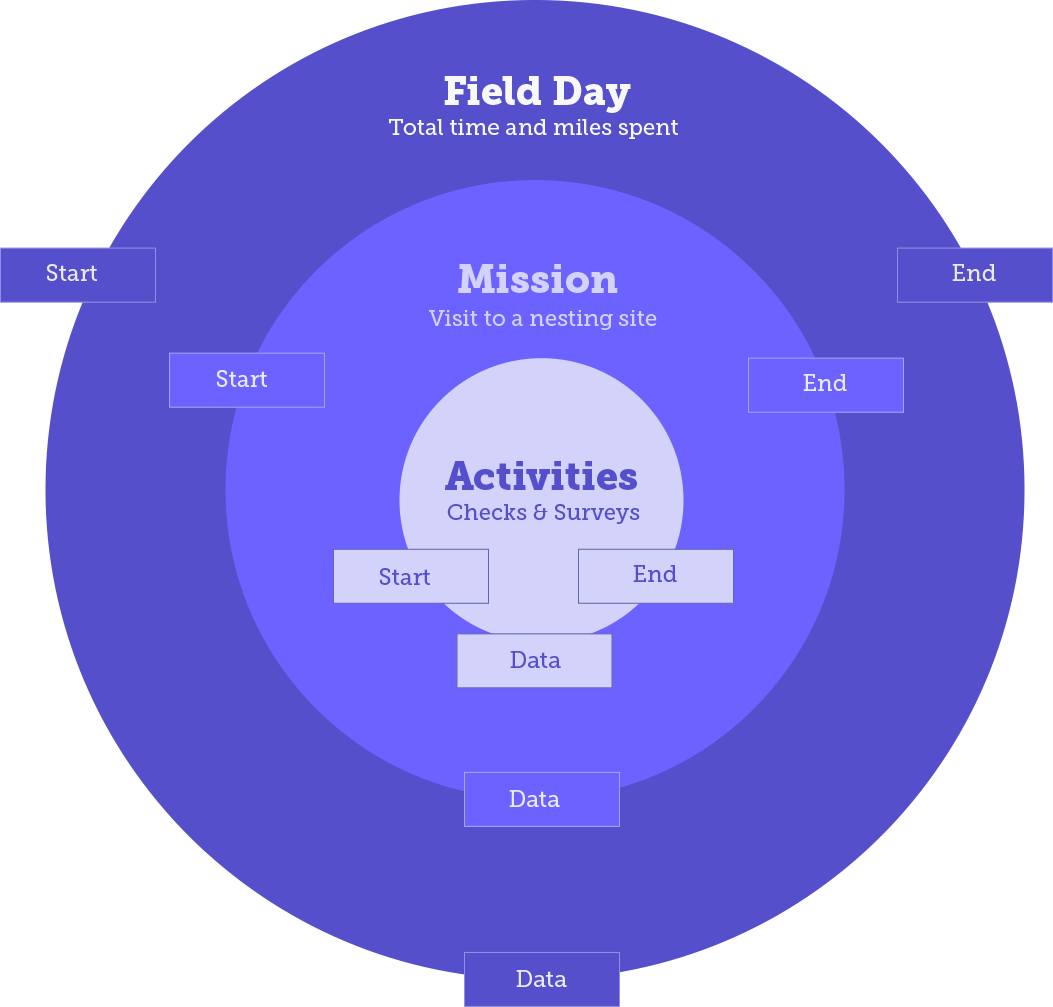
It helps to think of the NestStory process as a set of concentric circles. You check nests while inside a visit to a nesting site. And you visit your nesting sites in the context of a larger day of field work. Each has unique value, start times, and end times, and other attributes.
Joining the mission
Just as NestStory breaks down a nest into all of the smaller parts from which it is formed, NestStory also breaks up our field work into smaller activities with distinct attributes. The most important concept for new users is understanding that NestStory makes a distinction between the nesting site, or the general geographic area where a nest is found, and the location of the nest itself. The need for this distinction is obvious if you are a monitor at a large state park containing dozens of nests, and less obvious if you monitor a single nest which happens to be in your backyard.
NestStory calls any visit to a nesting site a “mission” and anything you do at the nesting site an “activity.” The bulk of your activities will be nest checks; but depending on how your NestStory is configured, you may also be doing pair checks, structure checks, taking surveys about the habitat, or making notes about the nesting site in general, regardless of any activity at the nests it contains.
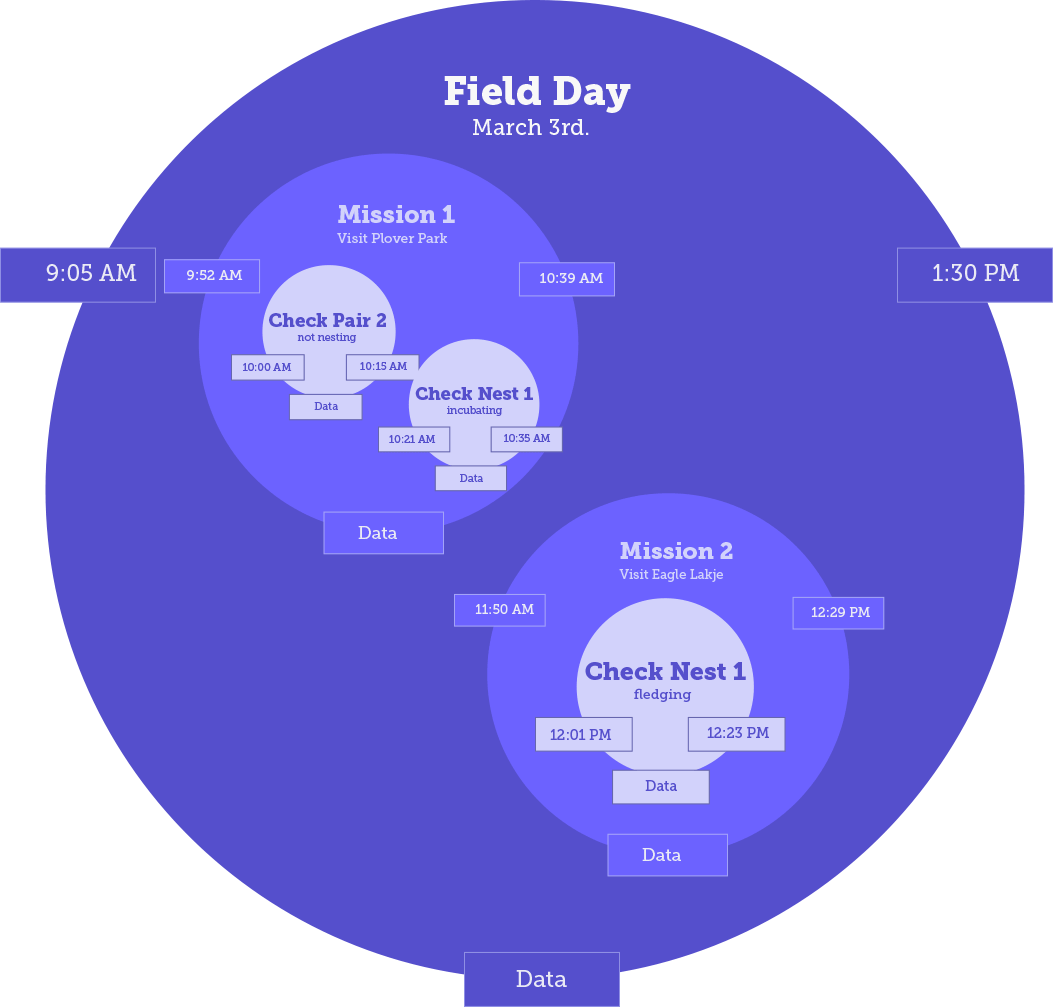
Example of a field day with two mission and three activities.
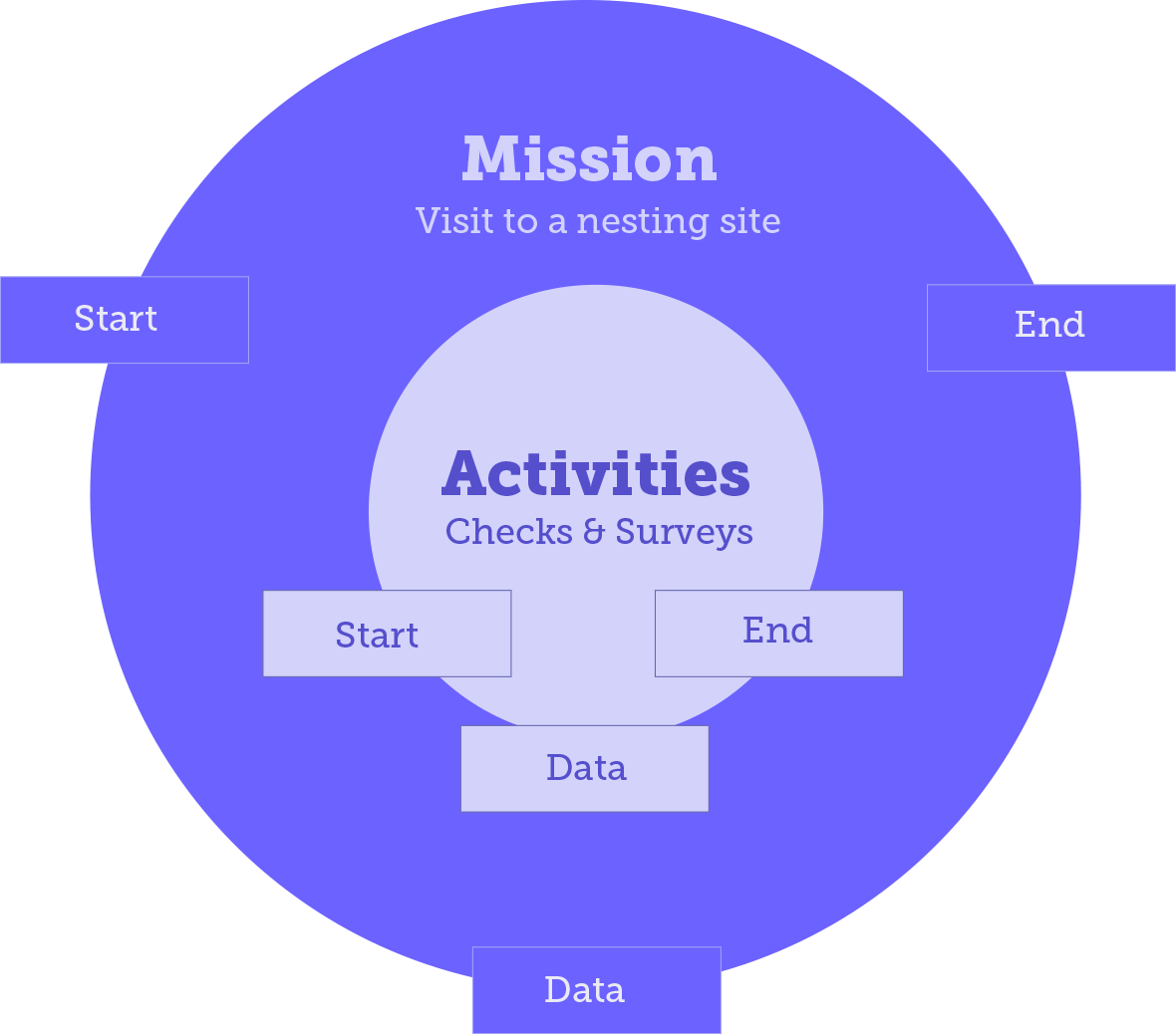
Many organizations don't even use field days, making NestStory even simpler. Just visit your nesting sites on missions, and record your checks and surveys.
So a mission is simply any visit to a nesting site. You launch your mission when you arrive, and close it when you leave. While you have the mission open, you can take notes, surveys, and perform checks. Even if you only have one nest, by separating your visit to the “nesting site” from your check of “the nest”, data managers and biologists working with your data have more flexibility to manage larger teams of monitors and larger numbers of nests more quickly and more effectively. A great way to understand why it is important to separate out our visits to nesting sites from our actual nest checks is to consider the need for administrators to know when someone was at a habitat looking for nests, even when there weren’t any to check yet!
We are all scientists
Understanding these basic concepts should make you a power user of NestStory in no time. More importantly, we hope by understanding the what and the why of how NestStory works inspires you think about all of the conservation work that is based on studying the large data sets of which your contributions are a big part. We hope that by learning to see your nests and your activities through the eyes of a data scientist, you will see more, record more, share more, learn more, and hopefully, through your enhanced contributions, help more birds!



